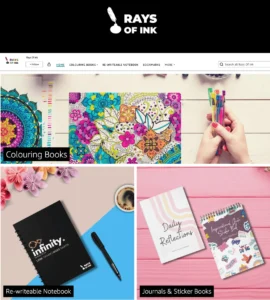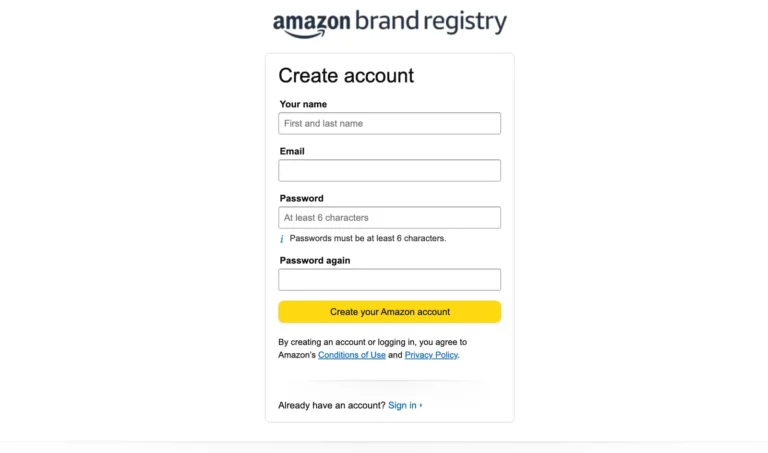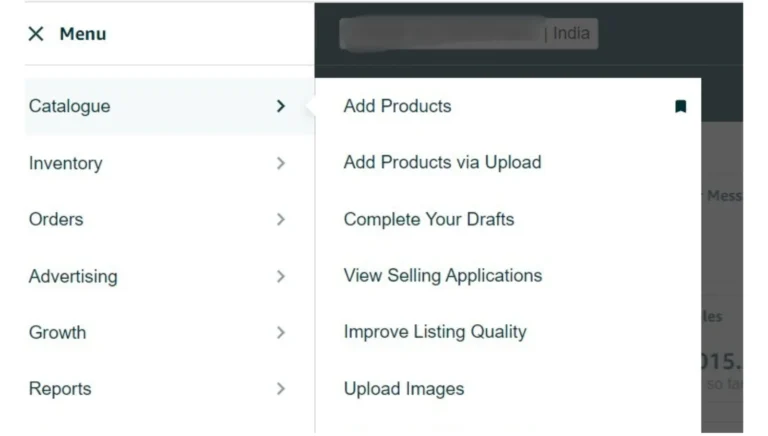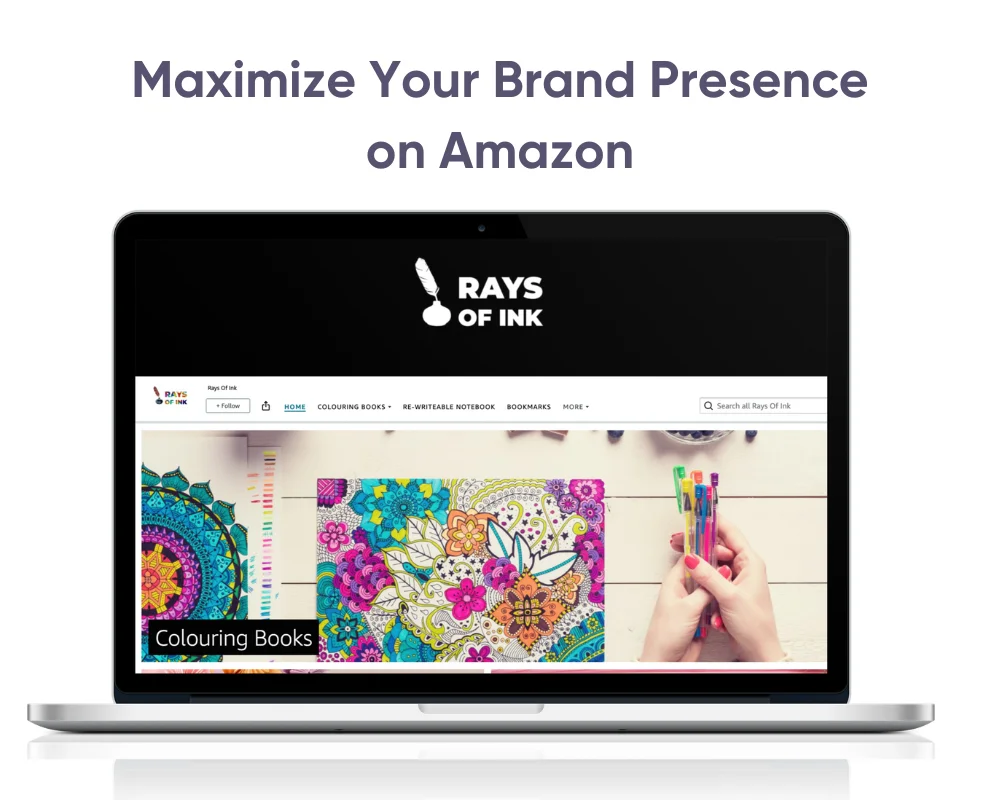In today’s fast-paced e-commerce world, your brand’s success is determined by how well you connect with customers. As the largest online marketplace, Amazon offers an incredible opportunity for businesses of all sizes to reach millions of shoppers. However, the challenge remains: how can you stand out from other sellers who offer similar products and want the same customers?
One answer is Amazon Brand Stores, a marketing solution that lets you offer your buyers a seamless, brand-focused shopping journey. This blog will guide you through everything you need to know about Amazon Brand Stores, from how they work to why they’re essential for building customer loyalty, increasing conversions, and creating a unique brand presence on Amazon.
1. What is Amazon Brand Store?
Amazon Brand Stores are individual multipage interfaces where selected brands can present their products and share background information. While a standard catalog listing page provides basic information, a Brand Store for your products means that you can fully customise your brand and brand content, as well as include rich multimedia content: lifestyle images and videos, featured products, and others. It’s your brand’s dedicated space on Amazon, where customers can explore everything you offer, learn about your brand’s values, and see how your products fit into their lifestyle.

Why Does This Matter?
E-commerce is highly competitive, especially on a platform like Amazon where millions of products are available in every niche. The general layout of the Amazon search results page is very cluttered, and customers are forced to make snap, price-based decisions without fully assessing why your product is superior to the competition. Amazon Brand Store is a tool that allows you to augment your basic Amazon catalogue listing of products and make the consumer engagement more interesting.
Imagine walking into a well-curated physical store versus browsing through aisles in a warehouse-style shop. Your Brand Store is this perfect place – that breathtaking environment where customers are entrapped and would feel comfortable to shop with you.
2. How Do Amazon Brand Stores Work?
Brands can sign up for an Amazon Brand Store if they are part of the Amazon Brand Registry. It is not very time-consuming and includes a lot of steps, but the outcome is highly impressive. Once you create your Brand Store, you can start driving traffic to it through various methods, including organic traffic from your product pages and paid advertising.
How Shoppers Can Find Your Brand Store:
Byline Links: Consumers can locate your Brand Store by clicking the brand byline on its product detail page link. This is the clickable brand name that appears under the product title

Sponsored Brands and Display Ads: Your Brand Store page can also act as the default page for customers who click on the Sponsored Brands or Sponsored Display advertisements.
Store URL: Amazon provides each Brand Store with a unique, easy-to-share URL. You can use this URL across your own marketing channels, such as social media, newsletters, or other platforms.
It’s not mere selling of products; it’s establishing a brand store on one of the biggest retail platforms in the world.
3. Benefits of Amazon Brand Stores
Why should you bother to build an Amazon Brand Store?
The advantages are not limited to the showcased product alone, in fact, it goes beyond that. Here’s how a Brand Store can help grow your business.
i. Differentiating Your Brand from Competitors
When customers land on your Brand Store, they are introduced to your brand identity—logo, colors, your brand story and the products you offer. This is important for businesses to achieve in the current saturated environment. In a world where product differentiation seems more or less impossible, the consistency of the image you portray to the customers can be the key to success.
To have your own corner on Amazon means a lot because you will be able to present yourself in accordance with your branding. At the same time when competitors are engaged in the price war, you can indeed stand out from the crowd by giving the customer a seamless and polished brand image.
For example: For instance, you might be a business that sells sustainable kitchen utensils. Your Brand Store may contain information about your appreciation of sustainability and your explaining strategic messaging of how your product is made from renewable resources Immerse your Brand Store in great photos corresponding to an eco-conscious lifestyle. Such a type of narration creates trust and makes the customers feel they are in some way associated with your company.
ii. Driving Conversions Through Education
Data from Amazon shows that new-to-brand shoppers who visit a Brand Store are 62.7% more likely to purchase compared to those who don’t visit a store. Additionally, when they do purchase, they tend to spend 72.3% more per order than customers who don’t visit a Brand Store.
This is because Brand Stores enable you to give out more information concerning your products hence enabling any potential buyer to make a refined decision. Whether it is a product demo video or lifestyle imagery, your Brand Store becomes an educational tool that directly empowers consumers to make a buy.
iii. Cross-Selling and Increasing Average Order Value
The main benefit of having a Brand Store is the opportunity to offer all your products to the customer at once. With self-service merchandising, when customers come to your stores focused on a certain good, they are informed of other products they may not have been aware of. This has the potential to promote cross-sell and other forms of higher-order value.
For instance, a customer who buys a pair of shoes in your Brand store may also learn about your line in athletic wear or fitness equipment. With a coherent Brand Store setup, you can leave the customer on related products, which will thus increase the likelihood of buying more products.
iv. Building Long-Term Customer Loyalty
Brand Stores are not just meant for point-and-click sales—they hold actual investment value. It helps the user to make the next purchase more and more likely since your brand will represent a familiar and comfortable shopping environment. They may even favorite the URL of your store or even recommend it to friends and families.
Indeed, the facility to update the content with new articles, specials, new products or series, guarantees clients’ attention. In other words, you’re not just selling goods anymore, you’re more involved – you’re invested in relationships.
4. Step-by-Step Guide to Creating Your Amazon Brand Store
Let’s dive into the step-by-step process for setting up your Amazon Brand Store. While Amazon makes the process user-friendly, there are several key steps to ensure your store is optimized for success.
Step 1: Sign Up for Amazon Brand Registry
However, to launch a Brand Store you have to register your business in Amazon Brand Registry first. This program safeguards your brand name by providing you with a means of combating counterfeiters and other unauthorized sellers who might want to use your brand name.
To qualify for the programme you must have a registered or pending trademark for your brand or logo. This trademark must be issued by the designated government trademark office of the country where Amazon operates

Step 2: List Your Products
Once you’re enrolled in Brand Registry, the next step is to list your products on Amazon. This refers to the posting of high-quality product descriptions that include proper images of the product, well-written descriptions of the product, and product titles with appropriate keywords. The more effort you put into these listings, the better your Brand Store will perform.
Pro Tip: You can use dynamic widgets to automatically update product displays in your store based on customer behaviour, such as showcasing your best-selling products or new arrivals

Step 3: Build Your Storefront Using Amazon’s Store Builder
Now, it’s time to start building your Brand Store. Amazon’s Store builder tool offers three templates to choose from:
Product Grid: This layout is clean and easy to navigate – perfect to showcase a few products at a time.
Marquee: Additional, full bleed space for imagery, and a clear section for product descriptions.
Showcase: This kind of flexible template enables you to showcase relatively many products with the integration of sophisticated media such as videos and quality pictures.
Once you’ve selected your template, use Amazon’s drag-and-drop editor to customize your store with your branding, product imagery, and text. There are options to organize your store and create as many pages as you need to distribute goods by type theme, or any other characteristic.
Tip: Think of your Brand Store as a reflection of your physical store. Just like you’d arrange products carefully on shelves, pay attention to the visual hierarchy of your Brand Store. Ensure the hallmark products and the main communication message are in the foreground.
Step 4: Submit for Publishing
After your store is created, you must submit your store for approval. Overall moderation can sometimes extend to several days, so make sure you follow Amazon standards to allow your content to pass moderation quickly. After your store has been approved, they are available for purchase by millions of Amazon buyers.
5. Maximizing the Potential of Your Amazon Brand Store
Creating your Brand Store is just the beginning. To fully leverage its potential, you’ll need to take ongoing steps to keep it fresh, engaging, and optimized for sales.
i. Keep Your Store Updated
Customers need to be engaged and to do that, you need to update the Brand Store on a regular basis. This will include updating your collection every time there is a new product, during special sales, or when changing the imagery with a new set of pictures for a new season of the year will help the shoppers always check your store now and then.
Pro Tip: It is wise to also keep updating your Brand Store, ideally, at least once a quarter. This makes your store content updated and conveys to the shoppers, that your store is alive and is being regularly maintained.
ii. Monitor Performance with Store Insights
Amazon shares extensive data using Store Analytics known as Store Insights where top data like page view, sales, source, and average time spent can be seen. Use this data to see which pages and products are performing well, and which might need improvement.
For example, if your data shows that a certain category page is receiving a lot of traffic but not many conversions, you may want to review the product descriptions, imagery, or pricing to see where improvements can be made.
iii. Use Advertising to Drive Traffic
The ideal opportunity to enhance the visibility of your Brand Store is by promoting the Brand Store using Sponsored Brands or Sponsored Display ads. Such ads can be placed for specific keywords or customer groups, so the traffic attracted to the storefront is highly qualified.
With the right strategy, you can use these ads to increase visibility, boost product sales, and encourage customers to explore more of your product range within your Brand Store.
6. Frequently Asked Questions About Amazon Brand Store
Here are answers to some common questions sellers have about Amazon Brand Stores:
Who Can Create a Brand Store?
Brand Stores are open to sellers involved in the Amazon Brand Registry and to vendors and agency organizations that manage brands on the Amazon platform.
How Much is It Going to Cost to Build My Brand Store?
Amazon Brand Stores can be easily created and owned at no cost to the brand.
Is My Brand Store Available for Shoppers to ‘Visit’ Using Mobile?
Yes. Note that Amazon Brand Stores are perfect for mobile, desktop, and tablet interfaces, allowing reach all customers.
How Long Does It Take to Have Approval for My Brand Store?
Once the application is filled, it will take about 3 to 5 days for Amazon to approve the store. Though, it requires all content to meet Amazon standards to prevent rejection and wasting time.
Conclusion:
In the competitive world of Amazon selling, having a unique space where customers can interact with your brand is more important than ever. Amazon Brand Stores provide an unparalleled opportunity to showcase your products, tell your story, and create an immersive shopping experience that not only drives sales but also builds long-term customer loyalty.
Whether you’re a small business just starting or an established brand looking to scale, investing in a Brand Store allows you to elevate your presence on Amazon and create a lasting impact. By curating a personalized, branded experience, you’ll stand out in a crowded marketplace and provide customers with a reason to keep coming back.
Now that you know how to create and optimize your Amazon Brand Store, it’s time to get started. Take control of your brand’s future and make the most of what Amazon has to offer!
Additional Reading
For more insights into optimizing your Amazon business, check out:

